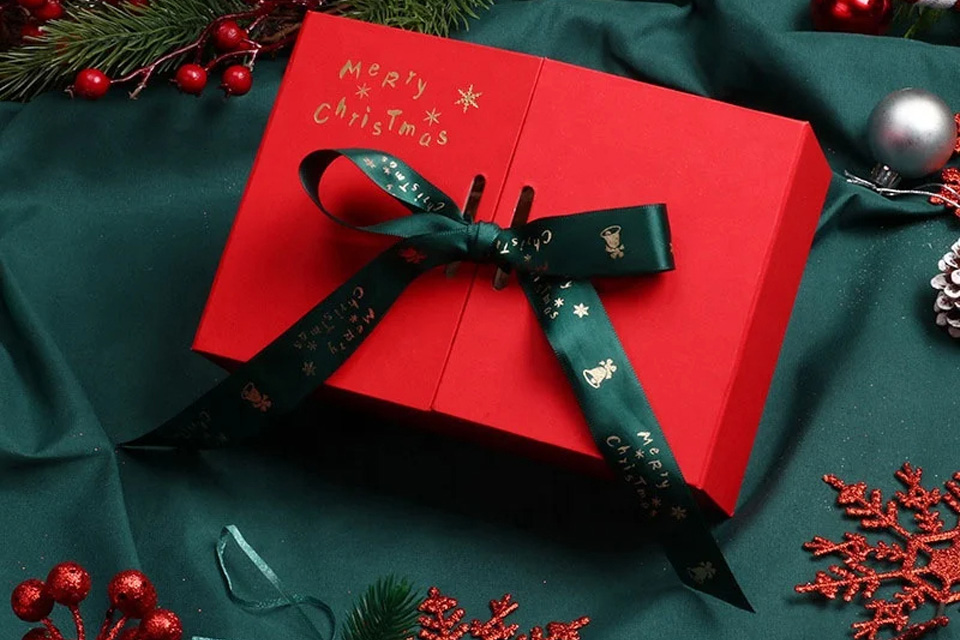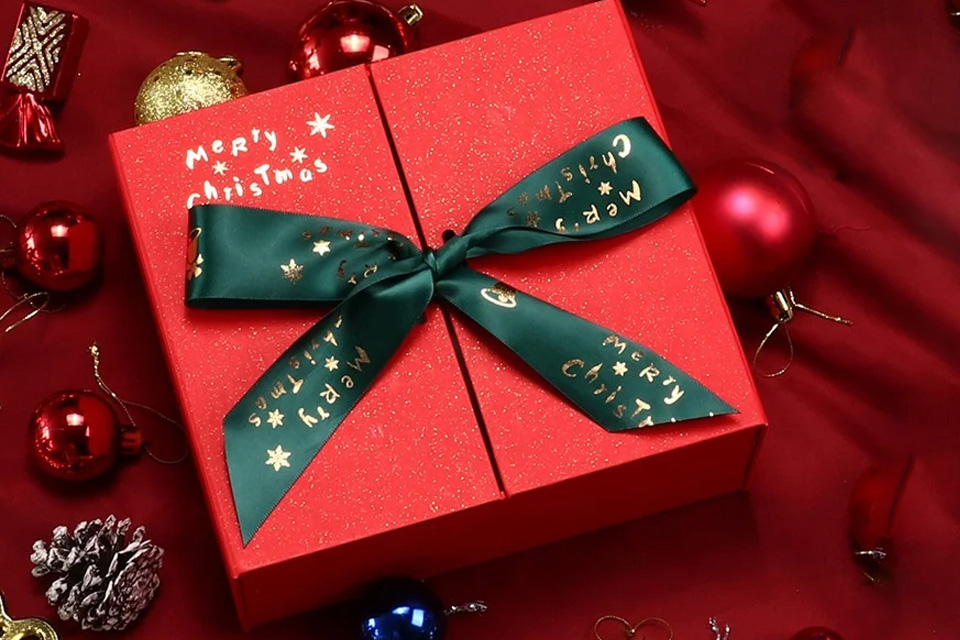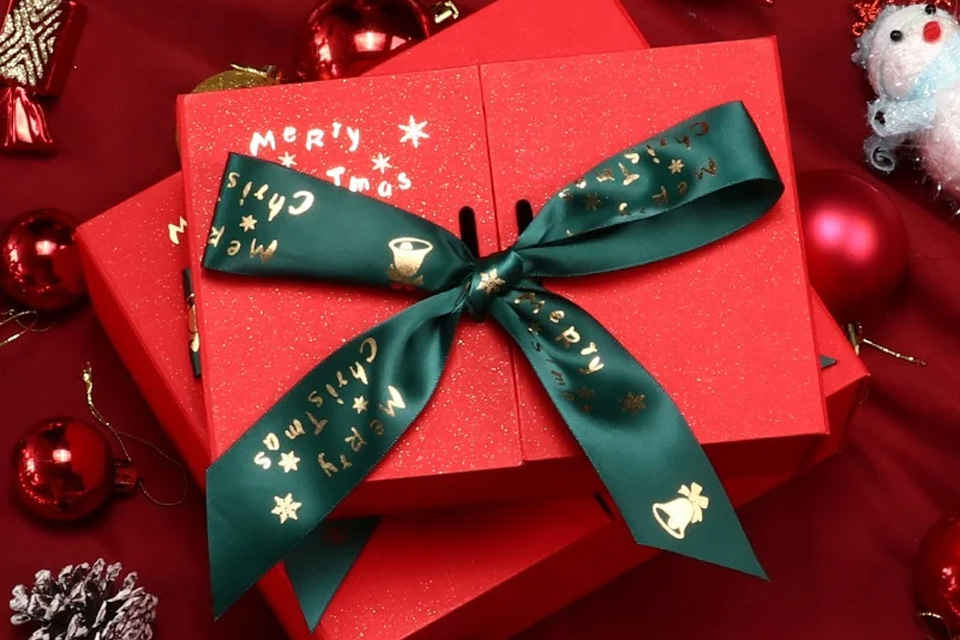Creative Innovation of Christmas Packaging Design: 10 Trends and Commercial Value of Seasonal Packaging in 2025
Introduction With the booming holiday economy, seasonal packaging has become the core carrier for brands to establish emotional connections with consumers. Especially Christmas, as one of the most concentrated holidays in the world, its packaging design not only needs to carry the product protection function, but also needs to express the holiday spirit and convey brand value through creativity. The Christmas packaging in 2025 presents a deep transformation from "visual attraction" to "emotional resonance". This article will analyze the 10 major innovation trends and reveal the business logic and cultural connotation behind them.
1. Visual Narrative of Holiday Symbols: Constructing Cultural Memory Points
The core of Christmas packaging lies in the creative application of holiday symbols. The classic red and green color scheme, reindeer, snowflakes and other elements still dominate the mainstream, but the design method has been upgraded from "direct stacking" to "narrative expression". For example, Starbucks' 2025 limited edition cup body uses a combination of dynamic polka dots and dancing portraits, integrating coffee culture with Christmas carnival to form the theme visual language of "Coffee Happiness". Jo Malone's Magic Christmas series breaks tradition with blue-green tones of vertical stripes, creates a sense of mystery through cold colors, and gives the fragrance packaging a dramatic story scene. This symbol reconstruction strategy makes the packaging the "first chapter" of the holiday narrative, inspiring consumers to deeply identify with the brand culture.
2. Innovative application of environmentally friendly materials: a win-win situation of sustainability and commercial value
In 2025, the penetration rate of environmentally friendly materials in Christmas packaging has reached 63% (according to the "Global Packaging Trend Report"), among which three types of designs are the most representative:
- Degradable kraft paper + embossing technology: For example, the Kali Christmas gift bag uses kraft paper printed with soybean ink, with concave and convex snowflake patterns, which not only reduces pollution but also improves the touch quality.
- Modular wooden structure: The Japanese souvenir Paulownia box uses mortise and tenon joints instead of glue, and is equipped with adjustable partitions inside to realize the sustainable concept of "one box for multiple uses".
- Seed paper revolution: Some brands have launched wrapping paper that can grow lavender after being buried in the soil, and the concept of environmental protection runs through the entire use cycle. These designs not only respond to consumers' demand for green consumption, but also increase brand exposure time through the reuse rate of packaging.
3. Emotional design of unboxing experience: from functional container to ritual carrier
Modern Christmas packaging is shifting from "protecting products" to "creating surprises", enhancing emotional value through three-layer experience design:
- Physical layer: Magnetic gift boxes are paired with LED light strips, and the lights gradually brighten when the box is opened. For example, jewelry brands use transparent acrylic boxes with built-in warm light sources to highlight the texture of the product.
- Interactive layer: The Advent calendar gift box is designed with 25 drawer-style small compartments. The ritual of opening a compartment every day prolongs the holiday expectations.
- Memory layer: The time capsule gift box supports batch delivery of souvenirs. Consumers can mark the date and open it in stages to form a continuous emotional touchpoint. According to the user experience report, the repurchase rate of gift boxes with layered surprise design is 27% higher than that of traditional packaging.
4. Modular and multifunctional packaging structure: Solving the problem of scene adaptation
In order to cope with the diverse gift-giving scenes, the Christmas packaging in 2025 presents three major structural innovations:
- Honeycomb combination system: The hexagonal unit gift box of the Danish brand can be freely combined into a handbag or desktop storage rack through buckles, which is suitable for business gifts and home scenes.
- Magnetic replacement design: A wedding gift box can switch between Chinese lacquer patterns and Western enamel paintings by replacing the top cover decorative piece, reducing the brand's multi-scene development costs.
- Temperature control function integration: The thermal insulation gift box using phase change energy storage materials can maintain a constant temperature for foods such as chocolate for 8 hours, allowing fresh gifts to break through transportation restrictions. This type of design transforms packaging from "disposable consumables" to "scene solutions" through technology empowerment.
5. In-depth exploration of regional culture: from global convergence to local resonance
The localization of Christmas packaging has become a key strategy for brands to seize regional markets:
- Re-creation of oriental aesthetics: wedding gift boxes in Jiangsu and Zhejiang regions incorporate Suzhou embroidery patterns, with the "Liuhe" gift box symbolizing auspiciousness; the Guangdong market prefers gilded lion head patterns, showing Lingnan culture through enamel craftsmanship.
- Material cultural metaphor: The palm lacquer box influenced by the Japanese "minimal packaging" concept realizes the orderly display of snacks through a multi-layer folding structure, and the space utilization rate is increased by 35%.
- Color symbol conversion: Nordic brands combine minimalist white with reindeer brown, and convey the Scandinavian Christmas tranquility through low-saturation tones. Accurate capture of cultural differences helps brands establish differentiated cognition in the global market.
6. Organic integration of technological elements: the rise of AR and smart packaging
The technological development of Christmas packaging in 2025 will present two major directions:
- AR enhanced experience: Scan the surface of the gift box to play a customized blessing video, such as a zodiac theme packaging that uses AR technology to achieve virtual fireworks interaction.
- Intelligent sensing system: Pastry gift boxes equipped with humidity sensors monitor the internal environment in real time and synchronize data to the mobile phone APP, reducing the transportation damage rate by 42%. These technological breakthroughs not only improve functionality, but also create new marketing touchpoints through digital interaction.
7. The collision of minimalism and geometric aesthetics: the business logic of subtractive design
In the era of information overload, minimalist packaging highlights the brand tone through the "visual noise reduction" strategy:
- Symbol extraction: a single geometric figure replaces complex illustrations, such as a triangular abstract Christmas tree with gradient colors, which catches the consumer's attention within 0.3 seconds.
- Font revolution: the sans serif bold "MERRY CHRISTMAS" is arranged vertically, and the text itself forms a visual focus.
- Blank philosophy: Japanese brand MUJI's Christmas gift boxes are wrapped in monochrome linen only, conveying a simple holiday warmth through the texture of the material. Minimalist design reduces printing costs by 15%-20%, while improving shelf recognition, becoming an effective strategy for small and medium-sized brands to break through.
8. emotional added value of hand-made customization: the revival of DIY packaging
The growth of consumers' demand for personalization drives the return of handmade elements:
- Blank canvas strategy: Kali launched unpatterned kraft paper bags, encouraging consumers to create independently with stamps and stickers, and the number of clicks on related topics on social platforms exceeded 200 million.
- Material package combination: The brand provides material packages such as hemp rope, dried flowers, and hot stamping stickers. Users can make exclusive packaging according to video tutorials, such as a biscuit gift box DIY set with a repurchase rate of 58%.
- Flawed aesthetics: Deliberately retain the irregularity of hand-painted lines, enhance the human touch through "imperfect" design, and is suitable for niche designer brands. This participatory design transforms packaging into an "emotional creation carrier" and significantly improves user stickiness.
9. Full-cycle penetration of sustainable concepts: system innovation from materials to recycling
Leading brands have built a green closed loop covering production, use, and recycling:
- Production end: Bio-based plastics made from sugarcane bagasse reduce carbon emissions by 67% compared to traditional PE materials.
- Usage end: The gift box has a built-in QR code, which can be scanned to view the packaging disassembly instructions and secondary transformation plan.
- Recycling end: Cooperate with Cainiao Station to set up packaging recycling points, and return empty boxes to exchange for brand points. Full-link sustainable design not only reduces environmental load, but also strengthens the brand's image of responsibility through consumer participation.
10. Scenario extension of brand story: packaging is the content medium
The core mission of Christmas packaging in 2025 is "let the product speak for itself":
- Historical symbol reconstruction: The whiskey brand reproduces the 19th-century Christmas postcard pattern on the bottle, and uses a QR code to tell the brand's century-old craftsmanship.
- Smell scene fusion: The fragrance gift box has a built-in fir essential oil slow-release chip, which releases the pine fragrance as soon as the box is opened, creating an olfactory memory of the "winter forest".
- Public welfare value binding: For every gift box sold, 1 euro will be donated to a child welfare organization, and a hand-painted pattern of the beneficiary will be printed on the inside of the package. Through multi-dimensional sensory experience, packaging transcends physical boundaries and becomes the core medium for brand value delivery.
Conclusion
The Christmas packaging design in 2025 has entered a new stage of "mind occupation". From the technological breakthrough of environmentally friendly materials, the narrative reconstruction of cultural symbols, to the scene reconstruction of technological interaction, every innovative detail is deepening consumers' emotional identification with the brand. For companies, Christmas packaging is no longer a cost item, but a strategic asset that connects users and delivers value. Brands that can deeply integrate the spirit of the festival, business logic and design aesthetics will surely win long-term growth in this ritualistic consumer season.
 English
English Español
Español Português
Português Pусский
Pусский Français
Français Deutsch
Deutsch 日本語
日本語 한국어
한국어 Italiano
Italiano عربى
عربى


